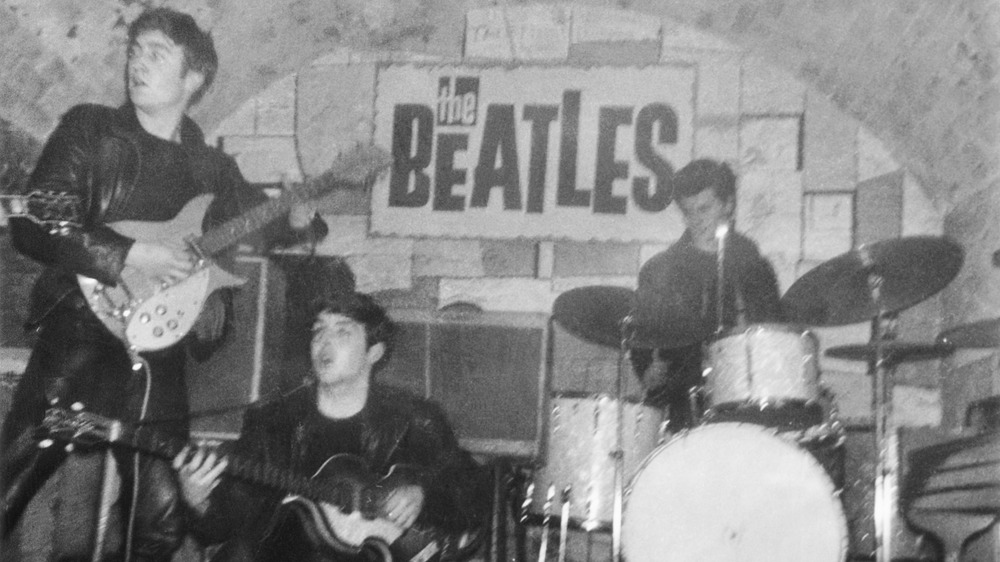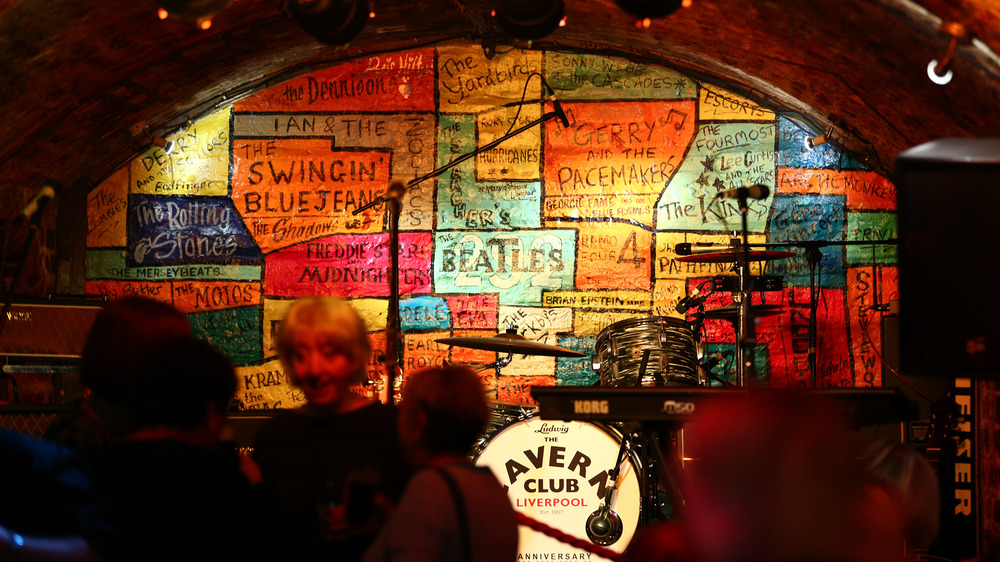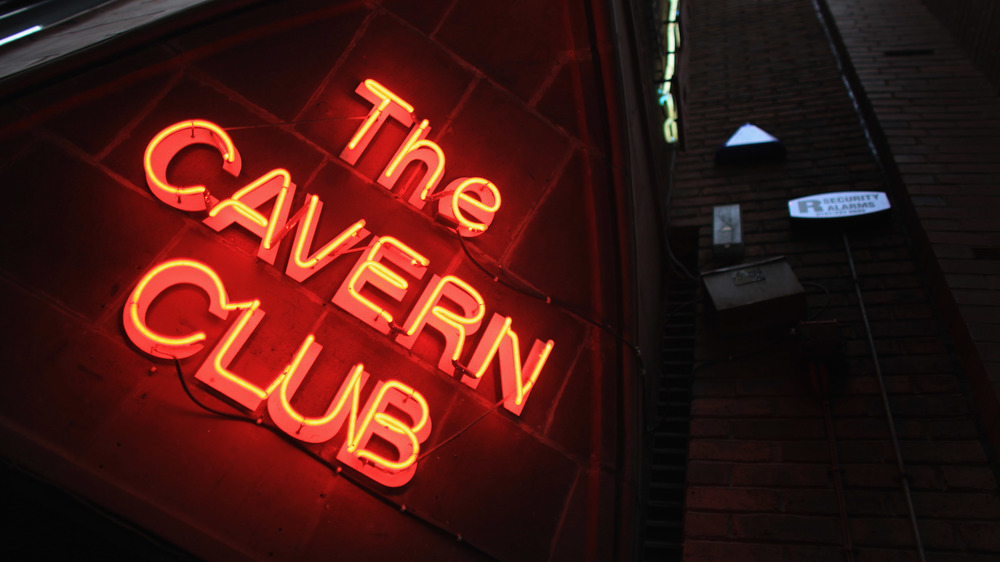What You Don't Know About The Legendary Cavern Club
The World Famous Cavern Club on Liverpool's riotous Matthew Street has been one of the city's most celebrated nightspots since opening as a jazz club all the way back in 1957. Of course, the club will forever be inexorably linked with the even more famous group who made their name there: The Beatles, who played almost 300 gigs at the club as they were beginning to build a local following in the city in the early 1960s. The links between the Cavern and The Beatles go even deeper, however, as John Lennon would perform there as part of his first group, The Quarrymen, and attempt to play rock 'n' roll tunes to a jazz audience who were generally hostile to the new genre, according to Beatles Bible. It was also at a concert at the Cavern that The Beatles would first catch the attention of Brian Epstein, who, off the strength of their performance, would offer to become their manager, a move which would accelerate The Beatles' stratospheric rise to international stardom.
But the story of the Cavern Club is not all about Liverpool's most famous sons. As well as a huge amount of interest from tourists on the trail of The Beatles, the club has continued to be a hot spot for music for over 70 years, and has reflected the changing face of the city in the process.
Legendary shows at the Cavern Club
Enter the Cavern Club and you're certain to encounter two things: lively music, and walls full of famous names. Painted behind the stage, carved individually into bricks, and hanging from the walls in gig posters and memorabilia are the names of thousands of acts who have graced the stage and rocked the crowd at the Cavern over the decades.
Many of these are from the decade with which the club is most closely associated: the 1960s. According to the Cavern Club website, the Cavern was a regular venue for a host of names associated with '60s rock 'n' roll, and Merseybeat in particular — the Fab Four, but also other bands such as Gerry & the Pacemakers, The Searchers, The Hollies, Billy J Kramer, and Cilla Black, whose statue, like John Lennon's, now stands just a few feet from the entrance to the club.
Many heritage acts from the period return regularly to the club to allow fans to relive a very special time in the city's history, including, reports the BBC, Sir Paul McCartney himself, who has performed in the relatively small venue as recently as 2018. But the Cavern has also acted as an important venue in the rise of many major groups in the decades since, into the present day, including Oasis, Adele, and The Arctic Monkeys, among others. Considering the Cavern has also hosted old-time legends such as John Lee Hooker and Howlin' Wolf, it's a remarkable legacy.
The Cavern's fight for survival
It's not always been easy for the World Famous Cavern Club. Back in the 1970s, the club was forced to close and relocate to make room for Liverpool's new underground train line. The new location didn't suit the club, however, and it shut down, to be replaced by the Revolution Club, and later, Eric's, which became legendary in itself, reports the Liverpool Echo. In the 1980s, the Cavern was rebuilt at approximately its original location, using thousands of the original cellar bricks, giving us the club as we know it today.
But in 2020, the club again hit headlines around the world with the news that the iconic venue was struggling to survive as a result of the coronavirus epidemic. As a result of lockdown measures imposed throughout the year, it has been estimated that the club has been losing around £30,000 — nearly $40,000 US — a week. Bill Heckle, one of the directors of the Cavern Club, told the Liverpool Echo, "We made a decision a few years ago to keep as much money in the bank as possible for a rainy day, not realizing it was going to be a thunderstorm. We were sitting on £1.4 million (about $2 million US) in the bank that has now been halved."
The Cavern Club's fight for survival is a reminder of the difficulties that venues and independent businesses are facing the world over. Do we want to imagine a future without them?


